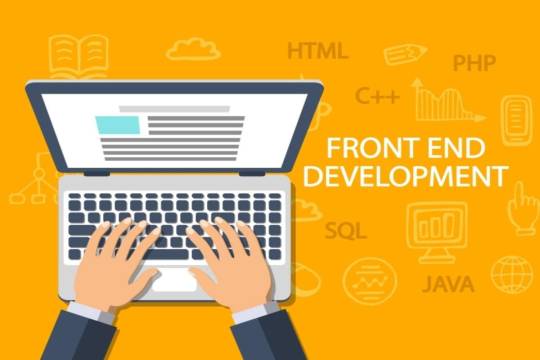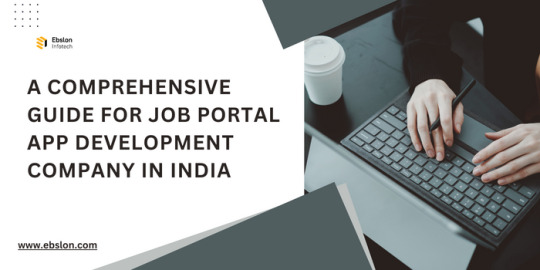#become frontend developer
Explore tagged Tumblr posts
Video
youtube
Intro component with sign-up form | Frontend Mentor | #Day17
0 notes
Text
Best Full Stack Web Developer Roadmap 2023 - Iqontech
At the heart of the Full Stack Web Developer Roadmap 2023 lies a solid foundation in programming languages such as HTML, CSS, and JavaScript. These form the building blocks of the web and allow you to create visually appealing and interactive user interfaces.
#Full Stack Web Developer Roadmap 2023#Full Stack Web Development Guide 2023#Web Development Roadmap for 2023#Full Stack Developer Skills roadmap 2023#Frontend and Backend Development 2023#Best Technologies for Full Stack Web Developers 2023#Full Stack Web Development Learning Path 2023#Latest Web Development Trends 2023#Full Stack Web Development Tools 2023#How to Become a Full Stack Web Developer in 2023
0 notes
Text

Hey all!
Happy 1 year anniversary to the launch of our Kickstarter! Meow! We just can't believe it. The project has grown and matured immensely since its inception, and with the hard work of the team it's become something amazing!
We know that for a monument this big, it's expected to see a big update; something which immortalizes our accomplishments.
We are working on a HUGE November drop!
November celebrates our funding milestone, so we'll be going all out! This update is business as usual. But brewing under the surface of our team… we are preparing something grand.
New Fauna

Sponsored and concepted by Apollo, designed and illustrated by Hydde
A wonderful backer-sponsored design!
*Name is not final
New Gene
Speaking of backer sponsored assets, we have finished rendering a gene sponsored for our game:

Sponsored and concepted by Venex, final design and illustration by Fulemy
Here are a few color previews!

Hawthorne, Apple, Daybreak, Radish, Beetroot, Lily, Peony, Dragonfruit, Catmint, Fire, Flame, and Silver
Aaaaand we are working on translating Overgrowth! Check out this ivy version!

Illustrated by Remmie
New Backdrops
It's a great month for environmental art!
Harvest Outskirts


Illustrated by Jerso
Zenith Outskirts


Composition by Runeowl, illustrated by Jacksonjoker
Luna Outskirts


Illustrated by Harriertail
And that's it for this time around!
Mechanic Updates
We've completed the backend for:
Item storage and item "safekeeping" mechanic
Daily hunting party duties (item gathering) and cat-dependent advantages in daily activities
Customize and dress-up for a cat
We also built the item card and accessory preview functionality on the frontend!
Frontend designs for all of these mechanics are done, it's onto frontend building! Once we wrap up this section of development, it's onto the Guild, cooking/crafting, and market mechanics! After which, the game will be in a playable state... wow!
To Summarize: We shared new fauna, backdrops, the new backer gene, a preview of Overgrowth, and an update on where we are in development.
What to expect next month: Something big...
87 notes
·
View notes
Text

Tuesday 12th December 2023
End of September: I quit my first proper tech job after 2 years.
End of October: I applied for university on a whim and got a place.
Start of December: Randomly got a new tech job without searching.
God blessing me left, right, and center?! That's just a summary of what's been happening the past few months. I will go into more detail below~!
Here are some tips for talking to people on LinkedIn: post 💕
If you're wondering how I got here in terms of my coding journey: video | post 💕

End of September
I quit my job because it was getting tiring and I couldn't see any chance of me developing there. I will forever be grateful for the opportunity to do my apprenticeship with them and then go on to become their Jr Web Developer - but from there, everything felt static. When the projects being given were getting absolutely boring, I knew then I needed some kind of change. So, I just quit. I said on a Monday I was quitting and that same Friday, I left. Politely and respectfully, of course.

End of October
I was so random how I did this but my Dad suggested for me to apply to university. I told him I didn't even have the right qualifications they wanted. He said "Bet". We looked at the local universities and none mentioned any apprenticeship certifications but mentioned work experience in the field. I applied with that knowledge. Wrote the cringiest personal statement about why the universities should accept me - and it worked. I got into the university of my city which seemed super prestigious to me, 18-year-old me would be screaming that I got a place at the university that I deemed for super smart people.
I made a post about it: link 💕

Start of December
My plan now was to wait until university next September 2024. I planned to relax, level up my current skills by myself or helping via volunteering, and maybe get a few certificates (because I love my name on certificates), and, most importantly: catch up on some anime shows - which I did complete:
Ushio & Tora: 2nd Season
Hunter x Hunter
Vinland Saga
JOJO Part 5 (again)
Jujutsu Kaisen 2nd Season (still watching)
Basically, I was supposed to relax until around February time, then start looking for a new job - tech or non-tech.
!! At this point, I was not looking for a new job !!
Last Tuesday I got a message from a recruiter on LinkedIn saying my profile was cool and would love to help me get an interview for a Frontend Software Engineer position in the city. I had a hunch to tell him I was okay and wasn't looking for a new job right now, but I was getting bored recently and this to me was an exciting new thing to do, so I said yeah why not!
The meeting was on the following Thursday and I met the IT manager. He liked me (same back to him) and wanted me to meet the team next Monday (yesterday). Afterward, I was feeling "Oh wait this is getting serious, I'm only here on a whim, like I'm actually doing good?" so I thought "Okay let's make an effort on the next 'interview'!!".
Monday came and I met the funniest set of people ever in a tech team. Then I thought "Lowkey highkey... would be so cool to work here~!" and the feedback I got was really positive. I got the job. Today I talked to their HR to finalise things.

All of this is thanks to the Almighty God, Lord Jesus, and the Holy Spirit of course~~! 🥰🙏🏾☦️
#codeblr#coding#progblr#programming#studying#studyblr#learn to code#comp sci#tech#programmer#computer science
42 notes
·
View notes
Note
Hey, what made you want to become a Front end dev?
Hiya,
TLDR: I like art & design + programming and Frontend Web Development allows me to exercise both~! 🐼💓
I love designing and building websites. I'm a creative person - in highschool I studied Art & Design, Graphics and Media. basically if getting into Medical School failed, I was going to go into Graphic Designing~!
But I dropped out in the last year, so I focus on programming (influenced by my dad of course) and I thought "What job combines being artistic with programming?" I googled it and the first one of the list was Frontend Web Development so I ran with that~!
Learnt HTML, CSS, JS and Python, applied for Software Development apprenticeship whilst doing a Frontend Dev bootcamp (free from the UK government) and here I am~!
Amongst my tech friends, I'm known for "designing pretty websites that may/may not be fully functional but at least the designs are cute"... I just asked them as I write this so I don't know how I feel about that-
That's all really 😅🙌🏾
28 notes
·
View notes
Text
How to Develop a P2P Crypto Exchange and How Much Does It Cost?
With the rise of cryptocurrencies, Peer-to-Peer (P2P) crypto exchanges have become a popular choice for users who want to trade digital assets directly with others. These decentralized platforms offer a more secure, private, and cost-effective way to buy and sell cryptocurrencies. If you’re considering building your own P2P crypto exchange, this blog will guide you through the development process and give you an idea of how much it costs to create such a platform.
What is a P2P Crypto Exchange?
A P2P crypto exchange is a decentralized platform that allows users to buy and sell cryptocurrencies directly with each other without relying on a central authority. These exchanges connect buyers and sellers through listings, and transactions are often protected by escrow services to ensure fairness and security. P2P exchanges typically offer lower fees, more privacy, and a variety of payment methods, making them an attractive alternative to traditional centralized exchanges.
Steps to Develop a P2P Crypto Exchange
Developing a P2P crypto exchange involves several key steps. Here’s a breakdown of the process:
1. Define Your Business Model
Before starting the development, it’s important to define the business model of your P2P exchange. You’ll need to decide on key factors like:
Currency Support: Which cryptocurrencies will your exchange support (e.g., Bitcoin, Ethereum, stablecoins)?
Payment Methods: What types of payment methods will be allowed (bank transfer, PayPal, cash, etc.)?
Fees: Will you charge a flat fee per transaction, a percentage-based fee, or a combination of both?
User Verification: Will your platform require Know-Your-Customer (KYC) verification?
2. Choose the Right Technology Stack
Building a P2P crypto exchange requires selecting the right technology stack. The key components include:
Backend Development: You'll need a backend to handle user registrations, transaction processing, security protocols, and matching buy/sell orders. Technologies like Node.js, Ruby on Rails, or Django are commonly used.
Frontend Development: The user interface (UI) must be intuitive, secure, and responsive. HTML, CSS, JavaScript, and React or Angular are popular choices for frontend development.
Blockchain Integration: Integrating blockchain technology to support cryptocurrency transactions is essential. This could involve setting up APIs for blockchain interaction or using open-source solutions like Ethereum or Binance Smart Chain (BSC).
Escrow System: An escrow system is crucial to protect both buyers and sellers during transactions. This involves coding or integrating a reliable escrow service that holds cryptocurrency until both parties confirm the transaction.
3. Develop Core Features
Key features to develop for your P2P exchange include:
User Registration and Authentication: Secure login options such as two-factor authentication (2FA) and multi-signature wallets.
Matching Engine: This feature matches buyers and sellers based on their criteria (e.g., price, payment method).
Escrow System: An escrow mechanism holds funds in a secure wallet until both parties confirm the transaction is complete.
Payment Gateway Integration: You’ll need to integrate payment gateways for fiat transactions (e.g., bank transfers, PayPal).
Dispute Resolution System: Provide a system where users can report issues, and a support team or automated process can resolve disputes.
Reputation System: Implement a feedback system where users can rate each other based on their transaction experience.
4. Security Measures
Security is critical when building any crypto exchange. Some essential security features include:
End-to-End Encryption: Ensure all user data and transactions are encrypted to protect sensitive information.
Cold Storage for Funds: Store the majority of the platform's cryptocurrency holdings in cold wallets to protect them from hacking attempts.
Anti-Fraud Measures: Implement mechanisms to detect fraudulent activity, such as IP tracking, behavior analysis, and AI-powered fraud detection.
Regulatory Compliance: Ensure your platform complies with global regulatory requirements like KYC and AML (Anti-Money Laundering) protocols.
5. Testing and Launch
After developing the platform, it’s essential to test it thoroughly. Perform both manual and automated testing to ensure all features are functioning properly, the platform is secure, and there are no vulnerabilities. This includes:
Unit testing
Load testing
Penetration testing
User acceptance testing (UAT)
Once testing is complete, you can launch the platform.
How Much Does It Cost to Develop a P2P Crypto Exchange?
The cost of developing a P2P crypto exchange depends on several factors, including the complexity of the platform, the technology stack, and the development team you hire. Here’s a general cost breakdown:
1. Development Team Cost
You can either hire an in-house development team or outsource the project to a blockchain development company. Here’s an estimated cost for each:
In-house Team: Hiring in-house developers can be more expensive, with costs ranging from $50,000 to $150,000+ per developer annually, depending on location.
Outsourcing: Outsourcing to a specialized blockchain development company can be more cost-effective, with prices ranging from $30,000 to $100,000 for a full-fledged P2P exchange platform, depending on the complexity and features.
2. Platform Design and UI/UX
The design of the platform is crucial for user experience and security. Professional UI/UX design can cost anywhere from $5,000 to $20,000 depending on the design complexity and features.
3. Blockchain Integration
Integrating blockchain networks (like Bitcoin, Ethereum, Binance Smart Chain, etc.) can be costly, with development costs ranging from $10,000 to $30,000 or more, depending on the blockchain chosen and the integration complexity.
4. Security and Compliance
Security is a critical component for a P2P exchange. Security audits, KYC/AML implementation, and regulatory compliance measures can add $10,000 to $50,000 to the total development cost.
5. Maintenance and Updates
Post-launch maintenance and updates (bug fixes, feature enhancements, etc.) typically cost about 15-20% of the initial development cost annually.
Total Estimated Cost
Basic Platform: $30,000 to $50,000
Advanced Platform: $70,000 to $150,000+
Conclusion
Developing a P2P crypto exchange requires careful planning, secure development, and a focus on providing a seamless user experience. The cost of developing a P2P exchange varies depending on factors like platform complexity, team, and security measures, but on average, it can range from $30,000 to $150,000+.
If you're looking to launch your own P2P crypto exchange, it's essential to partner with a reliable blockchain development company to ensure the project’s success and long-term sustainability. By focusing on security, user experience, and regulatory compliance, you can create a platform that meets the growing demand for decentralized crypto trading.
Feel free to adjust or expand on specific details to better suit your target audience!
2 notes
·
View notes
Text
My Journey to Becoming a Frontend Developer
In today’s fast paced digital world, frontend development has become the cornerstone of delivering exceptional user experiences. From seamless web app navigation to visually stunning interfaces, a frontend developer brings ideas to life.
Why I Want to Be a Frontend Developer and How HNG Will Help Me Achieve My Goals
My journey to becoming a frontend developer is fueled by a passion for creativity, problem solving, and the desire to create applications that users love. Joining HNG internship bootcamp as a frontend developer is the perfect opportunity to sharpen my skills and gain hands on experience while contributing to real world applications.
My Motivation for Becoming a Frontend Developer
Ever since I first interacted with web technologies, I’ve been fascinated by the magic of turning code into functional and beautiful interfaces. It’s amazing how a few lines of HTML, CSS, and JavaScript can create immersive websites and applications that millions of people rely on daily.
Another reason I gravitate toward frontend development is its user centric nature. I love the idea of creating intuitive and visually appealing designs that make people’s lives easier. I’m driven by the opportunity to make technology accessible and enjoyable for everyone.
How HNG Will Help Me Grow in the Field
The HNG internship bootcamp is a game changer for aspiring developers like me. One of the most significant challenges in the tech world is bridging the gap between theoretical knowledge and real world application. HNG provides the perfect platform to tackle this by immersing participants in a fast paced, project driven environment.
Here’s how I believe HNG will accelerate my growth:
Hands On Experience: HNG’s focus on building real life applications aligns perfectly with my goal to learn by doing. By collaborating with a team to tackle real world challenges, I will develop technical skills that can’t be learned in isolation.
Mentorship and Guidance: HNG’s experienced mentors will provide valuable insights and feedback, helping me refine my coding skills, improve my design thinking, and understand industry best practices.
Exposure to Modern Tools and Frameworks: The bootcamp emphasizes modern frontend technologies. This aligns with my goal of mastering the tools that drive innovation in the industry.
Networking Opportunities: Being part of a vibrant community of like minded developers and industry experts at HNG will expand my professional network and open doors for future opportunities.
My Goals for the Internship and How I Plan to Achieve Them
During my time at HNG, my primary goal is to become a finalist in the frontend track and I plan to achieve this through other key goals such as:
Master Frontend Fundamentals: I aim to strengthen my knowledge of HTML, CSS, JavaScript, and popular libraries like React. I plan to achieve this by actively participating in all coding sessions and tasks, seeking feedback, and consistently practicing.
Contribute to Real World Projects: One of my key goals is to contribute meaningfully to the applications we build at HNG. By collaborating with team mates, meeting deadlines, and embracing challenges, I hope to add value to every project as I move up the ladder.
Enhance Problem Solving Skills: Frontend development often involves debugging and optimizing code. I will approach every challenge as an opportunity to learn and improve my critical thinking.
Develop a Strong Portfolio: By the end of the internship, I want to have a portfolio showcasing my contributions to real world applications, demonstrating my skills to potential employers that require the service of an experienced JavaScript and React developer.
Conclusion
Becoming a frontend developer is not just a career choice for me, it’s a passion that aligns with my creative and technical interests. The HNG internship bootcamp provides a unique opportunity to accelerate my growth, gain hands on experience, and prepare for the dynamic world of frontend development. With a clear vision of my goals and a commitment to learning, I’m excited to embark on this journey and make the most of this incredible opportunity at HNG.
3 notes
·
View notes
Text
Just in case you were wondering
Big city area where I live;
(All Numbers pulled off indeed)
Waitress @ Red Robin : $73k/yr + benefits and tips
Front Desk Secretary @ Bank : $54k/yr + benefits
Warehouse: $34k/yr - no benefits
And I know you're like what the fuck already but get this one;
Police officer; $28k/yr + benefits + douchebags
But get this, this is the real kicker;
Frontend (make buttons, sliders, menus) Programmer / Developer : $112k/yr + benefits
Ok the button guy makes as much as 4 cops - cool. So what, you all ask me, a beatupoldpickuptruck.
Here's some more jokes;
Director @ Trust Fund $85k/yr + benefits
Chief of Police @ (Precinct) $65k/yr + benefits
National Parks Service Ranger: $32k/yr no benefits
Backend (math, computation, everything not user facing in software) programmer / dev;
*drumroll*
$184,650/year + benefits + STOCK.
SO 👉👉 if you wanna *fight the bourgeois* or *overthrow the patriarchy* or get rich so you can buy your dream cottagecore tiny home, or buy a private island to build an entirely Wicca society, whatever you want
you should probably learn to code.
Specially since them daggum learning machines are getting so good at art and writing that sometimes you can't even tell the difference?
Only way to sieze control of the levers of power are to become the controllers of the sources of that power.
Wrench away the machines from the evil doers and capitalists
Let free your creativity on the canvas of virtual machines
Set yourself free, wielding knowledge as your sword.
Then no one can disarm you.
But that's just what this beatupoldpickuptruck thinks of things, don't pay me no mind, children.
49 notes
·
View notes
Text
The Roadmap to Full Stack Developer Proficiency: A Comprehensive Guide
Embarking on the journey to becoming a full stack developer is an exhilarating endeavor filled with growth and challenges. Whether you're taking your first steps or seeking to elevate your skills, understanding the path ahead is crucial. In this detailed roadmap, we'll outline the stages of mastering full stack development, exploring essential milestones, competencies, and strategies to guide you through this enriching career journey.

Beginning the Journey: Novice Phase (0-6 Months)
As a novice, you're entering the realm of programming with a fresh perspective and eagerness to learn. This initial phase sets the groundwork for your progression as a full stack developer.
Grasping Programming Fundamentals:
Your journey commences with grasping the foundational elements of programming languages like HTML, CSS, and JavaScript. These are the cornerstone of web development and are essential for crafting dynamic and interactive web applications.
Familiarizing with Basic Data Structures and Algorithms:
To develop proficiency in programming, understanding fundamental data structures such as arrays, objects, and linked lists, along with algorithms like sorting and searching, is imperative. These concepts form the backbone of problem-solving in software development.
Exploring Essential Web Development Concepts:
During this phase, you'll delve into crucial web development concepts like client-server architecture, HTTP protocol, and the Document Object Model (DOM). Acquiring insights into the underlying mechanisms of web applications lays a strong foundation for tackling more intricate projects.
Advancing Forward: Intermediate Stage (6 Months - 2 Years)
As you progress beyond the basics, you'll transition into the intermediate stage, where you'll deepen your understanding and skills across various facets of full stack development.

Venturing into Backend Development:
In the intermediate stage, you'll venture into backend development, honing your proficiency in server-side languages like Node.js, Python, or Java. Here, you'll learn to construct robust server-side applications, manage data storage and retrieval, and implement authentication and authorization mechanisms.
Mastering Database Management:
A pivotal aspect of backend development is comprehending databases. You'll delve into relational databases like MySQL and PostgreSQL, as well as NoSQL databases like MongoDB. Proficiency in database management systems and design principles enables the creation of scalable and efficient applications.
Exploring Frontend Frameworks and Libraries:
In addition to backend development, you'll deepen your expertise in frontend technologies. You'll explore prominent frameworks and libraries such as React, Angular, or Vue.js, streamlining the creation of interactive and responsive user interfaces.
Learning Version Control with Git:
Version control is indispensable for collaborative software development. During this phase, you'll familiarize yourself with Git, a distributed version control system, to manage your codebase, track changes, and collaborate effectively with fellow developers.
Achieving Mastery: Advanced Phase (2+ Years)
As you ascend in your journey, you'll enter the advanced phase of full stack development, where you'll refine your skills, tackle intricate challenges, and delve into specialized domains of interest.
Designing Scalable Systems:
In the advanced stage, focus shifts to designing scalable systems capable of managing substantial volumes of traffic and data. You'll explore design patterns, scalability methodologies, and cloud computing platforms like AWS, Azure, or Google Cloud.
Embracing DevOps Practices:
DevOps practices play a pivotal role in contemporary software development. You'll delve into continuous integration and continuous deployment (CI/CD) pipelines, infrastructure as code (IaC), and containerization technologies such as Docker and Kubernetes.
Specializing in Niche Areas:
With experience, you may opt to specialize in specific domains of full stack development, whether it's frontend or backend development, mobile app development, or DevOps. Specialization enables you to deepen your expertise and pursue career avenues aligned with your passions and strengths.
Conclusion:
Becoming a proficient full stack developer is a transformative journey that demands dedication, resilience, and perpetual learning. By following the roadmap outlined in this guide and maintaining a curious and adaptable mindset, you'll navigate the complexities and opportunities inherent in the realm of full stack development. Remember, mastery isn't merely about acquiring technical skills but also about fostering collaboration, embracing innovation, and contributing meaningfully to the ever-evolving landscape of technology.
#full stack developer#education#information#full stack web development#front end development#frameworks#web development#backend#full stack developer course#technology
9 notes
·
View notes
Text
The Role of a Frontend Developer: Crafting Engaging User Experiences
In the digital age, the frontend developer plays a pivotal role in creating the online experiences we interact with every day. From websites to mobile apps, these professionals are responsible for shaping how users interact with digital products, ensuring that every click, scroll, and swipe is smooth and intuitive. But what exactly does a frontend developer do, and why is their role so critical in today's tech-driven world?
What Is a Frontend Developer?
A frontend developer is responsible for the visual and interactive elements of a website or application that users interact with directly. They bridge the gap between design and technology, translating a designer’s vision into functional, responsive, and user-friendly interfaces. Unlike backend developers, who focus on the server-side aspects, frontend developers specialize in client-side development, working with tools and technologies that directly impact the user experience.
Key Responsibilities of a Frontend Developer
The main job of a frontend developer is to ensure that users can easily navigate, interact with, and enjoy the digital product. Here’s a breakdown of their core responsibilities:
Turning Design into Code: Frontend developers take the visual designs created by UI/UX designers and bring them to life using code. They ensure that what users see on their screen aligns with the intended look and feel, while also making sure it’s functional across different devices and screen sizes.
Responsive Design: With users accessing websites from various devices, such as smartphones, tablets, and desktops, frontend developers focus on responsive design. This means building websites that automatically adjust to fit different screen sizes and orientations, offering an optimal experience regardless of the device.
Optimizing Performance: A key part of a frontend developer’s job is making sure that websites load quickly and perform smoothly. They optimize images, manage scripts, and streamline code to ensure fast loading times, as slow websites can lead to user frustration and high bounce rates.
Implementing Interactivity: Frontend developers add interactive elements like animations, hover effects, and dropdown menus that enhance the user experience. By using JavaScript and frameworks like React or Vue.js, they make websites dynamic and engaging, going beyond static designs.
Cross-Browser Compatibility: Websites need to work consistently across different browsers (Chrome, Firefox, Safari, etc.), and frontend developers are responsible for ensuring this compatibility. They test websites in multiple environments to fix any bugs or inconsistencies in the design or functionality.
Core Skills of a Frontend Developer
To excel as a frontend developer, there are several technical skills and tools that are essential:
HTML/CSS: These are the building blocks of web development. HTML structures the content, while CSS styles it, ensuring that it looks polished and visually appealing.
JavaScript: This programming language allows developers to add interactive elements, like form validation, dynamic content updates, and animations, making websites more engaging.
Frameworks and Libraries: Frameworks like React, Angular, or Vue.js help developers build complex web applications efficiently by providing pre-built structures and components.
Version Control (Git): Collaboration is key in web development, and version control tools like Git allow frontend developers to track changes, collaborate with other developers, and manage different versions of the project code.
Responsive Design & CSS Frameworks: Developers often use frameworks like Bootstrap or Tailwind CSS to ensure that their websites are responsive and adaptable to all devices.
The Evolving Role of Frontend Developers
As technology continues to evolve, the role of a frontend developer is expanding. Today, the line between frontend and backend development is becoming increasingly blurred, with many frontend developers expected to have some knowledge of backend technologies (a role often referred to as "full-stack development").
Additionally, the rise of progressive web apps (PWAs) and headless CMS architectures has introduced new ways of thinking about frontend development. Frontend developers are now focusing on creating experiences that go beyond the browser, delivering high-performance, native-like experiences on the web.
Another area of growing importance for frontend developers is accessibility. Ensuring that websites are usable by people with disabilities is not just a legal requirement but a responsibility for developers who want to create inclusive digital experiences. This involves using semantic HTML, providing keyboard navigability, and designing with screen readers in mind.
Why Frontend Developers Are Crucial for Business Success
Frontend developers play a critical role in shaping the user experience, which directly impacts the success of a digital product. A well-designed, fast, and user-friendly website or application can increase engagement, boost conversion rates, and enhance brand perception.
For businesses, the user interface is often the first point of contact with potential customers. If a website is slow, difficult to navigate, or visually unappealing, users are likely to leave, costing the business potential sales or leads. Frontend developers ensure that the website or app not only looks great but also performs optimally, keeping users engaged and satisfied.
Conclusion
In the modern digital landscape, frontend developers are essential to creating seamless, engaging, and high-performance online experiences. Their unique combination of technical skills and creative problem-solving allows them to transform designs into functional, responsive, and dynamic websites. As the demand for intuitive digital products continues to grow, the role of the frontend developer will only become more integral to business success and the evolution of web technologies.
4o
You said:
is ko english ma kr do "A o A Sir aj 3 outreach sy bat hoi or YTC k Backlinks Create KIa "
ChatGPT said:
ChatGPT
"Hello Sir, today I had discussions with 3 outreach contacts and created backlinks for YTC."
4o
You said:
ma gmail pr richout kr raha ho mujy ya masg aya ha is ka mujy koi replly kro "Thanks for reaching out. We charge $59 for submission. Let me know what you think."
ChatGPT said:
ChatGPT
You can reply with a polite and professional message like this:
Subject: Re: Submission Inquiry
Hi [Recipient's Name],
Thank you for your response and for providing the pricing details. I appreciate the information. I'll take this into consideration and get back to you shortly with my decision.
Best regards, [Your Name] [Your Position] [Your Company]
This keeps the conversation open while allowing you time to decide.
4o
You said:
Write A Article on "Front End Developer"
ChatGPT said:
ChatGPT
Title: The Role of a Front-End Developer: Crafting the Digital Experience
In today’s fast-paced digital world, websites and applications are the primary touchpoints for businesses and users. The seamless experiences we enjoy on websites—from smooth navigation to responsive design—are largely due to the efforts of front-end developers. But what exactly does a front-end developer do, and why is their role crucial in building user-friendly, efficient digital products?
What is a Front-End Developer?
A front-end developer is a professional who focuses on the client-side development of a website or application. This means they work on the part of the website that users directly interact with. While the back-end (server-side) handles the logic and data storage, the front-end is responsible for what users see and how they interact with a site.
In essence, front-end developers translate design mockups into functional websites or applications using code. They combine the worlds of design, user experience (UX), and coding to ensure a smooth, responsive, and visually appealing user interface (UI).
Key Responsibilities of a Front-End Developer
The role of a front-end developer goes beyond just coding a website. It involves understanding user needs, optimizing for performance, and ensuring the digital product works flawlessly across various devices and browsers. Here are the key responsibilities of a front-end developer:
Translating Designs into Code: Front-end developers take designs created by web designers and bring them to life using programming languages like HTML, CSS, and JavaScript. They ensure the design translates accurately into a functioning webpage or application, maintaining the visual fidelity of the design while ensuring usability.
Ensuring Responsiveness: In today’s multi-device world, websites need to work across desktops, tablets, and smartphones. Front-end developers make sure websites are responsive, meaning they adapt seamlessly to various screen sizes and orientations.
Implementing Interactivity: Interactivity is key to user engagement. Front-end developers use JavaScript and related frameworks to add interactive elements like animations, sliders, form validations, and dynamic content updates, making the user experience more engaging.
Optimizing Performance: Fast loading times are critical for user satisfaction and SEO. Front-end developers optimize images, minimize code, and ensure efficient loading of assets to create websites that load quickly and perform smoothly.
Cross-Browser Compatibility: Websites need to work consistently across different browsers such as Chrome, Firefox, Safari, and Edge. Front-end developers ensure that websites function correctly and look the same on all browsers, addressing any quirks or inconsistencies.
Maintaining Website Accessibility: Front-end developers also focus on making websites accessible to all users, including those with disabilities. They implement practices like semantic HTML, ARIA (Accessible Rich Internet Applications) attributes, and keyboard navigation to create an inclusive user experience.
Essential Skills for a Front-End Developer
To excel as a front-end developer, professionals need a combination of technical skills, creativity, and attention to detail. Below are some of the key skills required:
HTML/CSS: These are the foundational languages of front-end development. HTML (Hypertext Markup Language) structures content on the web, while CSS (Cascading Style Sheets) defines how that content looks in terms of layout, color, fonts, and design.
JavaScript: JavaScript is a powerful scripting language used to add interactivity to a website. With JavaScript, developers can create dynamic content, handle user events, and interact with back-end data in real-time.
Responsive Design: Knowledge of responsive design is crucial to ensure that websites and apps work seamlessly across all devices. Tools like Bootstrap or media queries in CSS help developers create adaptive layouts that fit all screen sizes.
Frameworks and Libraries: Modern front-end developers often use libraries and frameworks like React, Angular, or Vue.js to build more complex web applications efficiently. These tools provide pre-built components and structures to speed up development.
Version Control (Git): Front-end developers often work in teams, and version control tools like Git allow them to track changes in code, collaborate with others, and ensure the codebase remains organized.
Cross-Browser Development: Each browser interprets code slightly differently, so front-end developers must test their websites across various browsers and devices to ensure compatibility.
The Importance of Front-End Developers in Business
In today’s digital economy, a company’s website or mobile app is often the first point of contact with customers. Whether it’s an e-commerce platform, a SaaS application, or a simple company webpage, the user experience can significantly impact brand perception and business outcomes.
Front-end developers ensure that these digital touchpoints are engaging, easy to navigate, and visually appealing, which can directly influence user engagement and conversion rates. A well-designed website that loads quickly, functions smoothly, and offers a seamless user experience can set a business apart from its competitors.
Moreover, front-end developers are key players in building websites optimized for SEO (Search Engine Optimization). Fast-loading, mobile-friendly, and well-structured websites tend to rank higher on search engines, driving more organic traffic to the site.
Front-End Development and Emerging Technologies
As technology evolves, so does the role of the front-end developer. The rise of progressive web apps (PWAs), single-page applications (SPAs), and headless CMS (Content Management Systems) has created new challenges and opportunities for front-end developers.
PWAs allow websites to function like native apps, offering offline capabilities and faster load times. Front-end developers need to integrate these features while maintaining the flexibility of a website.
SPAs load a single HTML page and dynamically update content as the user interacts with the app, creating a more fluid experience. This requires front-end developers to have expertise in frameworks like React and Angular.
Headless CMS decouples the front-end from the back-end, giving front-end developers more control over how content is presented. This allows for greater flexibility in design and user interaction.
Conclusion
The role of a front-end developer is crucial in shaping the digital experience. By combining technical expertise with creativity, front-end developers bring designs to life, ensuring that websites are not only visually appealing but also functional, responsive, and user-friendly. In a world where the digital experience can make or break a business, front-end developers are key players in driving online success.
2 notes
·
View notes
Text
Get to know me tag game!
Tagged by @goldheartedchaoticdisaster ^_^
Do you make your bed?
Sort of? I tend to leave it in a half-made state. Especially now that I've got the adjustable base and I often leave it in a 'sitting up' state in the morning after reading a little bit. I'll pull the covers up some so it looks neater, but still in an easy to hop back into sort of way.
2. Favorite number?
I don't really have one
3. What’s your job?
Software engineer, specifically frontend development.
4. If you could go back to school would you?
Down the road i might? Right after getting my bachelors degree I considered getting my masters but then I got a full time job (same one I'm still at) and decided I didn't need it. But I considered being a teacher once upon a time and it's something I still might choose to do down the road.
5. Can you parallel park?
Yes but I prefer not to. If there's parallel parking up close and normal parking further away, I'll walk the distance.
6. Do you think aliens are real?
I think so. The universe is vast and it seems more unlikely that we would be alone in it than that we have super distant neighbors out there somewhere.
7. Can you drive a manual car?
I've only ever driven automatic and I don't really like driving enough to learn to drive manual too.
8. What’s your guilty pleasure?
Starting projects I haven't finished yet. ;) I may have more of those than I really should.
9. Tattoos?
No, but I keep thinking more and more that I'd kind of like one? Despite my dislike of needles. I don't know... a stylized feather done in aro flag colors just seems kind of right for me?
That said I have no idea where I'd want it to go, so I'm likely still a long way off from actually getting one.
10. Favorite color?
Green, though blue is a close second. I used to love yellow as a kid, but as my eye sight started to become strongly near-sighted yellows (and some oranges) started to make my eyes ache after a while, which kind of cut down on my enjoyment of the color.
11. Favorite type of music?
Rock is my favorite, though I lean specifically towards soft rock. But to be honest? I've yet to hear a genre I didn't enjoy at least a little.
12. Do you like puzzles?
Yes, but I think I enjoy them more as a group activity than a solo one.
13. Any phobia?
I tend to get claustrophobic in loud, packed places. The claustrophobia coming from having too many people packed in around me and the noise making it hard to think. So I'm not much for clubbing or places like that.
14. Favorite childhood sport?
Soccer. I was on a team for a while in elementary school and I was actually a decent goalie and mid-fielder. But when it got more competitive and less for-fun I lost interest. I keep thinking I should get a ball and net for my backyard and just kick balls for fun again... but I haven't yet. (I also liked basketball, but I was never a very good shot.)
15. Do you talk to your self?
I'll think out loud a lot, so yeah. I'll also give 'voice' to what I think my dog is thinking. She's very sassy as far as I'm concerned. :D
16. What movies do you adore?
Science fiction and fantasy movies definitely. Star Trek, Star Wars, Stargate, Lord of the Rings, Ghostbusters... I'm a nerd, what can I say?
17. Coffee or tea?
Tea. I used to at least drink coffee socially, but it turned into an IBS trigger and I was glad to give it up entirely.
18. First thing you wanted to be growing up
Archaeologist. Or maybe a geologist? I bounced between the two a bit so honestly, it could be either. Quite different from what I actually chose to be.
Tagging: @hawkstincan @bottomoftheriverbed @coldflasher @corelliaxdreaming @angst-is-love-angst-is-life and throwing it out to anyone else who'd like to join in ^_^
3 notes
·
View notes
Video
youtube
FAQ accordion card | Frontend Mentor | #Day16
0 notes
Text
Frontend Frameworks for Web Development

Frontend Frameworks for Web Development, creating captivating and user-friendly websites and web applications is essential for businesses to thrive. With the increasing demand for dynamic and interactive web experiences, frontend development has become more crucial than ever.
To meet these demands efficiently, developers rely on frontend frameworks, which streamline the development process and enhance productivity.
In this comprehensive guide, we'll explore the world of frontend frameworks for web development, covering everything from key factors to consider when choosing a framework to the top options available in India.
Overview of Frontend Frameworks for Web Development
Frontend frameworks are collections of pre-written code, libraries, and tools that expedite the process of building user interfaces for websites and web applications.
These frameworks provide developers with a structured approach to frontend development, offering ready-made components, templates, and utilities to streamline common tasks.
By leveraging frontend frameworks, developers can achieve consistency, maintainability, and scalability in their projects while focusing more on functionality and user experience.
These frameworks often follow the principles of modularization and component-based architecture, facilitating code reuse and making development more efficient.
Key Factors to Consider in a Frontend Frameworks for Web Development
When choosing a frontend framework for web development, several key factors should be considered:
Community Support: Opt for frameworks with active and robust communities. A strong community ensures ongoing support, frequent updates, and a wealth of resources such as documentation, tutorials, and plugins.
Performance: Evaluate the performance metrics of the framework, including page load times, rendering speed, and resource utilization. A lightweight and efficient framework can significantly impact the user experience.
Flexibility and Customization: Assess the framework's flexibility in accommodating project requirements and its customization options. Look for frameworks that allow developers to tailor components and styles to suit specific design needs.
Learning Curve: Consider the learning curve associated with the framework, especially if you're working with a team of developers with varying skill levels. Choose a framework that aligns with your team's expertise and resources.
Compatibility and Browser Support: Ensure that the framework is compatible with a wide range of browsers and devices, particularly if your target audience includes users with diverse preferences and devices.
Updates and Maintenance: Check the framework's update frequency and long-term maintenance plans. Regular updates and proactive maintenance are essential for addressing security vulnerabilities and compatibility issues.
7 Best Frontend Frameworks for Web Development in India
Now, let's explore some of the top Frontend Frameworks for Web Development widely used by developers in India:
React.js: Developed by Facebook, React.js is a popular JavaScript library for building user interfaces. It emphasizes component-based architecture and virtual DOM for efficient rendering. React's ecosystem includes tools like React Router for routing and Redux for state management.
Angular: Backed by Google, Angular is a comprehensive frontend framework for building robust web applications. It provides features such as two-way data binding, dependency injection, and modular development. Angular offers a full-fledged ecosystem with Angular CLI for project scaffolding and Angular Material for UI components.
Vue.js: Vue.js is an advanced JavaScript framework known for its simplicity and flexibility. It allows developers to incrementally adopt its features and integrate it into existing projects easily. Vue.js offers reactive data binding, virtual DOM, and a rich ecosystem of plugins and components.
Bootstrap: Bootstrap is a popular CSS framework for building responsive and mobile-first websites. It provides a grid system, pre-styled components, and responsive utilities, allowing developers to create sleek and consistent designs quickly. Bootstrap is highly customizable and offers extensive documentation and community support.
Svelte: Svelte is a relatively new frontend framework that focuses on compiling components at build time rather than runtime. This approach results in highly optimized and lightweight web applications. Svelte's simplicity and performance make it an attractive choice for developers seeking efficiency and speed.
Tailwind CSS: Tailwind CSS is a utility-first CSS framework that provides a set of low-level utility classes for building custom designs. It offers a highly customizable and expressive approach to styling, enabling developers to create unique and responsive interfaces without writing custom CSS. Tailwind CSS is gaining popularity for its developer-friendly workflow and rapid prototyping capabilities.
Foundation: Foundation is a responsive front-end framework developed by ZURB, known for its modular and customizable nature. It offers a comprehensive set of CSS and JavaScript components, as well as a robust grid system and a variety of UI elements. Foundation is well-suited for building modern and accessible web projects.
Conclusion for Web Development
Choosing the right Frontend Frameworks for Web Development is crucial to the success of your website development. Consider factors such as community support, performance, flexibility, and compatibility when evaluating different frameworks. Each framework has its strengths and weaknesses, so assess your project requirements and development preferences carefully before making a decision.
Whether you opt for React.js, Angular, Vue.js, or any other frontend framework, prioritize learning and mastering the chosen tool to maximize its potential and deliver exceptional web experiences. Keep abreast of new developments, best practices, and emerging trends in frontend development to stay ahead in this ever-evolving field.
FAQs for Web Development
Q: Which frontend framework is best for beginners?
A: Vue.js and React.js are often recommended for beginners due to their relatively gentle learning curves and extensive documentation.
Q: How do I choose between Angular and React for my project?
A: Consider factors such as project requirements, team expertise, and ecosystem preferences. Angular offers a comprehensive solution with built-in features, while React provides more flexibility and a vibrant ecosystem.
Q: Are frontend frameworks necessary for web development?
A: While not strictly necessary, frontend frameworks greatly simplify and expedite the web development process, especially for complex and dynamic projects. They provide structure, consistency, and efficiency, ultimately enhancing productivity and user experience.
Q: Can I use multiple frontend frameworks in the same project?
A: While technically possible, using multiple frontend frameworks in the same project can lead to complexity, conflicts, and maintenance challenges. It's generally advisable to stick to a single framework to maintain code consistency and streamline development.
More Details
Email: [email protected]
Website: https://censoware.com/
#web development#website development#software development#web developers#pythonprogramming#phpdeveloper#javascriptdeveloper#mern stack development#mobile app development
2 notes
·
View notes
Text
Top Frontend Development Tools to Use in 2023

Front-End Web Development is a rapidly evolving field, with new tools and technologies constantly emerging. As we step into the year 2023, front-end developers are facing new challenges and opportunities in crafting engaging and responsive user interfaces. To stay ahead in this dynamic landscape, it's crucial to arm yourself with the right Frontend Development Tool.
In this blog, we will explore the top front-end development tools that are expected to dominate the industry in 2023. From code editors and frameworks to design tools and performance optimization, these tools will help you streamline your workflow, enhance productivity, and create cutting-edge web applications that meet the demands of modern users. Let's dive into the exciting world of front-end development and discover the must-have tools for 2023!
Top Frontend Development Tools to Use in 2023:
ReactJS:
ReactJS is a popular JavaScript library used by any Frontend Development Company for building user interfaces. With its component-based architecture, React allows developers to create reusable UI components that can be easily combined to build complex web applications.
React's virtual DOM (Document Object Model) enables efficient rendering, making it highly performant for creating interactive and dynamic user interfaces. React also has a large ecosystem of supporting tools, libraries, and community resources, making it a top choice for front-end development in 2023.
Vue.js:
Vue.js is another powerful JavaScript framework for building user interfaces. Known for its simplicity and ease of integration, Vue.js offers a flexible and scalable approach to front-end development. Vue.js follows a component-based architecture similar to React, making it highly modular and easy to understand.
Vue.js also offers features like two-way data binding, computed properties, and a comprehensive template syntax that simplifies the development process. With its growing popularity and extensive documentation, Vue.js is expected to gain more traction with any Web Development Company in 2023.
Figma:
Figma is a popular design tool that has gained significant popularity in recent years. It offers a collaborative and cloud-based approach to design, allowing front-end developers to work seamlessly with designers.
Figma offers powerful design and prototyping features, such as vector editing, component libraries, and real-time collaboration, making it a go-to tool for designing modern and responsive user interfaces. Figma also offers integrations with other design and development tools, making it a versatile choice for front-end developers in 2023.
Visual Studio Code:
Visual Studio Code (VSCode) is a widely used code editor that has become a staple in the front-end development community. With its extensive plugin ecosystem, powerful debugging capabilities, and rich set of features, VSCode provides an efficient and productive environment for writing front-end code.
VSCode offers support for a wide range of programming languages, including JavaScript, HTML, CSS, and popular front-end frameworks, making it a top choice for front-end developers in 2023.
Performance Optimization Tools:
As web applications become more complex, optimizing performance has become a crucial aspect of front-end development. Tools like Lighthouse, Webpage Test, and Google Page Speed Insights help developers analyze and optimize the performance of their web applications.
These tools offer insights and recommendations for improving areas like load times, caching, image optimization, and accessibility, helping developers create blazing-fast and user-friendly web applications in 2023.
jQuery:
jQuery is a widely used JavaScript library that has been a popular front-end development tool for many years. It provides a simplified way to interact with HTML documents, manipulate DOM elements, handle events, and make AJAX requests. jQuery offers a concise syntax and cross-browser compatibility, making it easy for developers to write efficient and interactive front-end code.
One of the key advantages of using jQuery is its simplicity and ease of use. It provides a concise and intuitive syntax that allows developers to perform common tasks, such as traversing the DOM, manipulating elements, and handling events, with just a few lines of code. This can significantly reduce the amount of code needed and simplify the development process.
Git and Version Control Tools:
Version control is an essential aspect of modern front-end development, allowing developers to collaborate, track changes, and revert to previous versions of their code.
Git, along with platforms like GitHub and GitLab, offers powerful version control capabilities, making it easy to manage the codebase, collaborate with teammates, and deploy changes to production. These tools are expected to continue to be a critical part of front-end development workflows in 2023.
CSS Pre-processors:
CSS pre-processors like Sass, Less, and Stylus have become popular tools for writing efficient and maintainable CSS code. These pre-processors offer features like variables, mixins, and nested selectors, making it easier to manage and organize CSS code for large web applications.
Conclusion:
The top front-end development tools for 2023 are expected to provide developers with powerful features that enhance their productivity, streamline their workflow, and enable them to create modern, responsive, and high-performing user interfaces.
These tools will be invaluable for Frontend Development Company India and Frontend developers in keeping up with the evolving landscape of web development. If you are looking for a Frontend Development Company in India, then connect with us now.
3 notes
·
View notes
Text
A Comprehensive Guide for Job Portal App Development Company In India

Introduction to Job Portal App Development
Job portal apps have become integral in connecting job seekers with potential employers. Their significance has grown exponentially due to the ease and convenience they offer in job searches. With the proliferation of mobile technology, job portal app development has witnessed a surge in demand.
Understanding the Essentials of Job Portal App Development
Developing a successful job portal app necessitates incorporating crucial features and functionalities. The user interface and experience play a pivotal role in engaging both job seekers and recruiters. A seamless and intuitive design enhances the overall user satisfaction.
Technological Aspects in Job Portal App Development
Behind the scenes, job portal development rely on robust backend technologies and frontend frameworks. Choose Ebslon Infotech technology stack is crucial for scalability, performance, and future enhancements.
Security Measures in Job Portal App Development
Ensuring data protection and user privacy is paramount in job search portal app development. Implementing stringent security measures safeguards sensitive information and builds trust among users.
Monetization Strategies for Job Portal Apps
Monetizing a job portal app can be achieved through subscription models or generating revenue from advertisements. Balancing profitability with user experience is key.
Challenges and Solutions in Job Portal App Development
Competitor analysis and overcoming technical challenges are essential aspects. Analyzing competitors helps in understanding market gaps, while addressing technical hurdles ensures a smooth user experience.
Optimizing Job Portal Apps for SEO
Employing effective SEO strategies like keyword optimization and ensuring mobile responsiveness enhances the app’s visibility and accessibility.
Testing and Quality Assurance in Job Portal App Development
Rigorous testing and QA methodologies guarantee a bug-free and reliable job portal development India, ultimately boosting user confidence.
Launching and Marketing Your Job Portal App
Strategizing pre-launch activities and employing post-launch marketing techniques are vital for app visibility and user acquisition.
User Feedback and Continuous Improvement
Constantly gathering user feedback and implementing improvements based on their suggestions ensures a dynamic and user-centric app.
Scaling and Future Trends in Job Portal App Development
Considerations for scalability and insights into emerging trends prepare job portal development for future growth and advancements in technology.
Conclusion
Developing a job portal app involves a comprehensive approach, combining technological prowess with user-centric design and robust marketing strategies. As the job market evolves, continuous improvements and adaptability are key to staying competitive.
#web design company delhi#website designing company in delhi ncr#website designing services in delhi#marketing
4 notes
·
View notes
Text
Offer Tips And Guidance For Aspiring Web Developers

Web Development Career Advice: Offer tips and guidance for aspiring web developers, including learning resources, career paths, and job market insights.
Web development is an exciting and dynamic field that offers countless opportunities for aspiring developers. Whether you’re just starting your journey or looking to advance your career, this article provides valuable advice and guidance to help you thrive in the world of web development.
1. Learn Continuously
Web development is constantly evolving, with new technologies, frameworks, and best practices emerging regularly. To stay relevant and competitive, it’s essential to commit to lifelong learning. Here are some tips:
Online Courses: Platforms like Udemy, Coursera, edX, and Codecademy offer a wide range of web development courses, from beginner to advanced levels.
Documentation and Tutorials: Read documentation and follow tutorials for the technologies you’re interested in. Official documentation is a valuable resource.
Books: Invest in web development books that cover fundamental concepts and provide in-depth knowledge on specific topics.
Online Communities: Join developer forums, participate in discussions, and ask for help when needed. Sites like Stack Overflow and GitHub are great places to start.
2. Choose Your Path
Web development offers various career paths. To determine which one aligns with your interests and goals, consider the following options:
Frontend Developer: Focuses on the visual aspects of websites, including HTML, CSS, and JavaScript.
Backend Developer: Works on server-side development, handling databases, servers, and business logic.
Full-Stack Developer: Manages both frontend and backend, offering a comprehensive understanding of web development.
Specialized Roles: Consider roles like mobile app development, DevOps, or UI/UX design, which require specific skills.
3. Build a Strong Portfolio
A portfolio is your professional identity. It showcases your skills, projects, and capabilities to potential employers or clients. Here’s how to create an impressive portfolio:
Include Diverse Projects: Showcase a variety of projects that highlight your versatility and expertise.
Keep It Updated: Regularly add new projects and skills to your portfolio.
Detail Your Process: Explain the problem, solution, and technologies used in each project.
Share Your Code: Provide links to GitHub or other version control repositories to demonstrate your coding skills.
4. Gain Practical Experience
While learning theory is essential, practical experience is equally crucial. Here’s how to gain hands-on experience:
Freelance Work: Take on freelance projects to apply your skills in real-world scenarios.
Open Source Contributions: Contribute to open-source projects to collaborate with experienced developers and improve your skills.
Internships: Internships provide valuable industry experience and the chance to learn from professionals.
5. Networking
Building a strong professional network can open doors to job opportunities and collaborations. Here’s how to network effectively:
Attend Meetups and Conferences: Participate in web development events to meet like-minded individuals.
Online Communities: Join forums, Slack groups, and social media channels dedicated to web development.
LinkedIn: Create a professional LinkedIn profile to connect with industry peers and potential employers.
6. Stay Informed About the Job Market
Web development job trends can vary by region and industry. Stay informed about the job market by:
Research: Explore job postings on various job boards to understand employer expectations and trends in your area.
Consult Industry Reports: Industry reports and surveys provide insights into in-demand skills and salary trends.
7. Soft Skills Are Important
In addition to technical skills, soft skills like problem-solving, communication, and teamwork are highly valued by employers. Cultivate these skills to become a well-rounded developer.
Conclusion: Your Journey to Web Development Success
Web development is a dynamic and rewarding field, offering opportunities for those with passion and determination. By continuously learning, building a strong portfolio, gaining practical experience, networking, and staying informed about the job market, you can embark on a successful web development career.
Remember that success in web development requires commitment and persistence. Keep learning, adapt to changes, and stay passionate about creating innovative web solutions. With dedication, you can thrive in this exciting and ever-evolving industry.
Source:
#kushitworld#saharanpur#india#itcompany#seo#seo services#webdevelopment#digitalmarketing#websitedesigning
3 notes
·
View notes